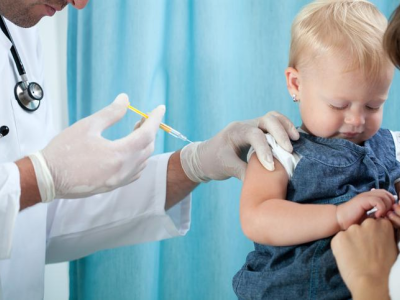Brazil reports first Latin American VRSA finding
The Pan American Health Organization (PAHO) yesterday urged its member countries to establish and maintain rapid detection and reporting systems for vancomycin resistance, based on the first isolation of vancomycin-resistant Staphylococcus aureus (VRSA) in Latin America.
In an epidemiologic alert, PAHO said the strain was isolated in December in the blood culture of a hospitalized 35-year-old man from Brazil who has underlying conditions and infections. He had previously been treated with vancomycin and teicoplanin.
His bacteremia was controlled with daptomycin, but he continued to have infections and died 3 months after VRSA was found in his blood sample. The findings were confirmed by labs in Colombia and the United States.
The Van A gene was also found in Enterococcus faecalis isolated from the patient. Further molecular studies are under way, and no other cases have been reported.
The first VRSA isolates were found in the United States in 2002. Eleven isolates had been reported by 2012, most from the United States, but one from India and one from Iran, according to PAHO.
VRSA infection typically causes skin and soft-tissue infections in people with underlying medical conditions.
Jun 27 PAHO epidemiologic alert
No immediate health risks linked to aerial mosquito spraying
Aerial spraying to prevent West Nile virus doesn't appear to cause an immediate public health risk, as measured by visits to emergency departments immediately after the spraying or in the 3 days afterward, according to a study in the May-June issue of Public Health Reports.
A research team from the University of California, Davis (UC-Davis), and the California Department of Public Health analyzed Sacramento County emergency department records during and immediately following area-wide spraying in and around Sacramento during the summer of 2005, according to a UC-Davis press release yesterday.
They found no increase in diagnoses most likely to be linked to pesticide exposure, such as respiratory, gastrointestinal, skin, eye, and neurologic conditions.
Estella Geraghty, MD, associate professor of clinical internal medicine at UC-Davis, said in the press release that West Nile virus is endemic in California and the United States, and controversies about managing mosquitoes are likely to arise every summer.
"Findings from studies such as this one help public health and mosquito control agencies better understand the risks and benefits of their practices," she said.
An ultra-low volume pyrethrin insecticide was used during the 2005 spraying. Though exposure to the pesticide has been linked to some human health problems such as eye irritation and respiratory problems, researchers said exposure to it was minimal, with only three-quarters of an ounce of the chemical per acre.
Geraghty said the study didn't address the long-term effects, which would be difficult to gauge in human populations.
Jun 27 UC-Davis press release
May-June Public Health Reports issue
Polio outbreak sparks vaccination campaign in Kenya
A polio outbreak in Kenya's Garissa district that resulted in six illnesses has prompted an emergency vaccination campaign that will target 4.3 million children, the Daily Nation, a newspaper based in Nairobi, reported yesterday.
The campaign begins Jul 3 and will focus on 22 counties, the country's public health director, Shahnaz Sharif, said. A repeat activity covering the same area is scheduled for Aug 17 to 21.
The main focus is children under age 5, except for in the Dadaab refugee camp, where everyone will be immunized, according to the report. Sharif said the polio outbreak this year is Kenya's fourth since 2006. The last one occurred in 2011.
Jun 27 Daily Nation story















